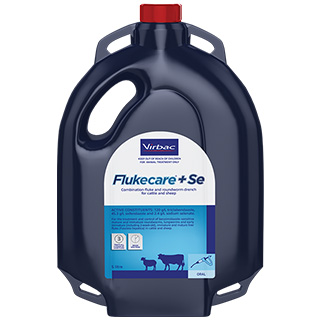
Liver Fluke in Cattle and Sheep
Liver fluke can cause major losses in production, often with few direct clinical signs, meaning you might not recognise the impact on your farm straight away. To make it more confusing, information on when and how to treat liver fluke, isn’t always crystal clear. When assessing whether to treat your herd for liver fluke, here are some key things to know:
Liver fluke is a parasite, which requires an aquatic snail to complete its life cycle and be able to infect stock. Given its affinity for water, the snail infects pastures near irrigation channels, dams and drains. Both the liver fluke and its snail intermediate host require a wet and warm environment meaning liver fluke is most prominent over the summer and spring. When the average temperature drops below 10oC, fluke eggs stop hatching, development of the larval flukes in the snails slows down, and the snails become inactive.
Given the tie to environmental conditions, the periods that liver fluke is active vary across New Zealand, with longer periods of activity in the far North and no fluke in the far South. In hot, dry regions such as Northland and Hawkes Bay, higher prevalence can occur due to animals preferentially grazing near wetter areas. The West Coast region in the South Island suffers higher prevalence due to extensive wet areas with suitable habitat for the intermediate host snails.
Clinical signs of liver fluke are often vague, with the first sign being a drop in production. Typically young cattle are more susceptible to liver fluke as both the migrating stages and adult fluke in the liver affects their growth rates - this is referred to as ‘ill-thrift’.
Liver fluke can cause ill thrift in stock, draining energy, causing blood loss and limiting weight gain potential. A project conducted using on-farm data and overseen by a mentor group of vets, showed that around 45% of ill-thrift in young sheep was due to parasitism (Beef and Lamb, 2018)1.
Other clinical signs include lower carcass value, reduced fertility and black disease.
There are a range of tests available to test for liver fluke and your vet will be able to recommend the option that best suits your herd or flock. Available tests include egg count, blood and milk antibody Elisa’s or post-mortem examination.
How do I treat liver fluke?
Liver fluke have a complex life cycle with several stages of growth both on pasture and inside cattle. This means that strategic treatments at the right time, can break the reproductive cycle and reduce the presence of fluke on your farm. Migrating flukes begin causing damage from the first week they are ingested meaning it is crucial to use the right product, at the right time.
The most effective option is to use a product that contains triclabendazole as this active ingredient kills fluke from as early as 2 weeks. In order to be effective against the early stages of fluke, triclabendazole needs to reach a high concentration in the liver. Due to this, oral drenches tend to be more effective as when given orally, triclabendazole is absorbed from the gastrointestinal tract and transported to the liver via the portal blood flow, achieving a high concentration of the drug quickly. In comparison, when applied topically, triclabendazole needs to penetrate through the skin, and then travel through the entire vascular system before it reaches the liver.
In conclusion, liver fluke is a complex parasite which can have long-term, devastating effects on your herd or flock. It is crucial to keep up with regular treatment so you can prevent and minimize production losses on your farm.
We recommend you work with your veterinarian to help identify cases of liver fluke on your property, and to devise and implement an appropriate control strategy as required.
1. Beef and Lamb NZ. (2018). Fact Sheet January 2018. Beef and Lamb NZ. https://beeflambnz.com/sites/default/files/factsheets/pdfs/Fact-Sheet-177%E2%80%94Ill-thrift.pdf

